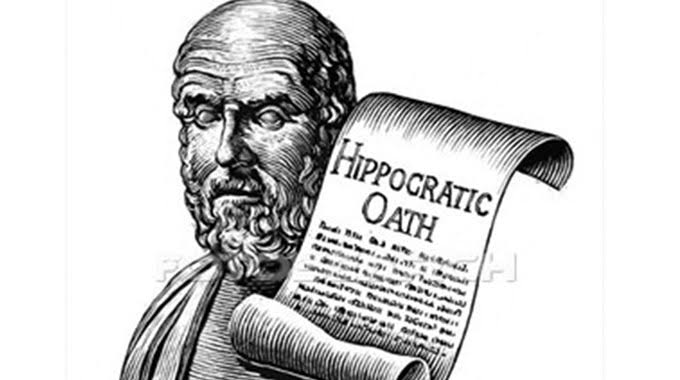The Hippocratic Oath is one of the most respected documents of history. It is a powerful rite of passage that connects generations of medical professionals around the world.
Laid out in the oath are principles, guidelines, rules, and regulations that provide the framework for modern medical ethics.
Below are 15 things you don’t know about the Hippocratic Oath
1. The Hippocratic Oath was composed over 2,000 years ago around the years 3-5 BC. The original text was written in Ionic Greek by Hippocrates, who is considered to be the father of modern medicine in most western cultures.
2. There are many versions of the Oath. We here present two versions. First, the “classic” version (or more precisely, one translation of the original oath). And then, following it, is presented one of the fine “modern” versions of the Hippocratic Oath.
3. The classical version of the Hippocratic Oath is from the translation from the Greek by Ludwig Edelstein. From The Hippocratic Oath: Text, Translation, and Interpretation, by Ludwig Edelstein. Baltimore: Johns Hopkins Press, 1943.
4. The modern version of the Hippocratic Oath was written in 1964 by Louis Lasagna, Dean of the School of Medicine at Tufts University.
5. In its original form, it requires a new physician to swear, by a number of healing gods, to uphold specific ethical standards. But this has been modified.
6. The Oath is still held sacred by physicians: to treat the ill to the best of one’s ability, to preserve a patient’s privacy, to teach the secrets of medicine to the next generation and so on.
7. The oldest extant version dates to roughly the 10th-11th century, held in the Vatican Library.
8.The content of the traditional Oath can be divided into 12 items: Covenant with the Greek god Apollo, Covenant with teachers, Commitment to students, Covenant with patients, Appropriate means & ends (the good of the patient not the physician), Limits on means & ends, Justice, Chastity, Confidentiality, and Accountability.
9. In Germany during the Third Reich, medical students did not take the Hippocratic Oath, although they knew the ethic of “nil nocere” — do no harm.
10. Most medical schools today have their students swear upon modernised version of the translation of the original Greek text, rather than the traditional version.

11. Even in this modern times and despite the modifications, the watchword of the Hippocratic oath still remains: Primum non nocerewhich means “First Do No Harm”
12. Many modern institutions have modified the content of the Hippocratic Oath to be more applicable to the time period. The most common changes to the modernized Oath include removing the prescription of sexual contact with patients, the ban against using abortive agents, the ban against euthanasia, the agreement to be accountable for keeping the Oath and the swearing to gods or God.
13. With so much modifications to meet modern needs, it is now a more secular document with no deference to any god or deity.
14. The Hippocratic Oath prohibits doctors from going on strike but this part has been expunged by many countries including Nigeria.
15. Breaking the Hippocratic Oath is not considered quackery but medical malpractice which can make a medical doctor or dentist lose his or her license or even go to jail. Quackery is when an individual not certified by a medical board like the medical and dental council of Nigeria (MDCN) carry out medical procedures.
Sources:
























